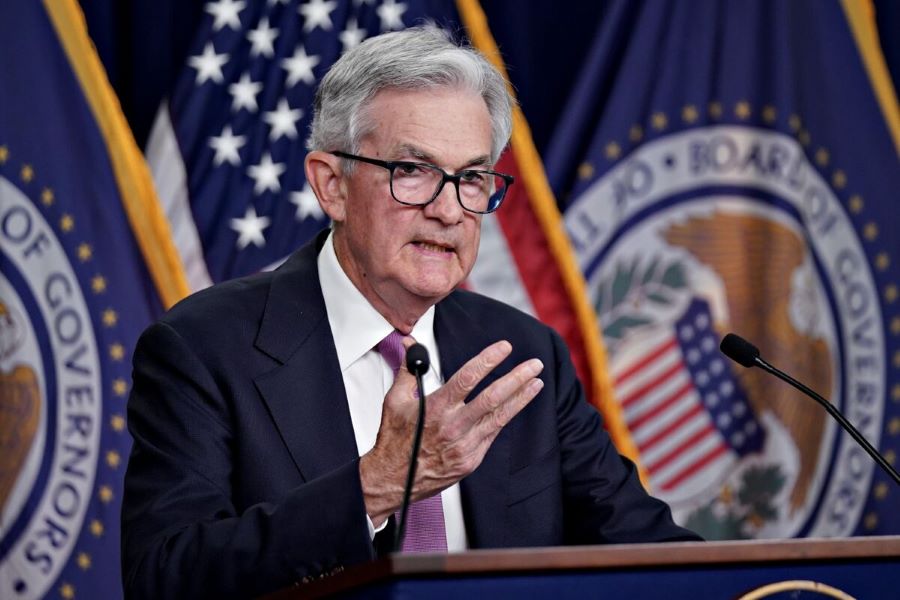Federal Reserve Chair Jerome Powell has indicated that further favorable inflation data would strengthen confidence that inflation is progressing towards the US central bank’s 2% target. His remarks come as recent figures suggest modest improvements in price stability.
Powell’s Testimony: Warnings and Precautions
In testimony prepared for a Senate hearing on Tuesday, Powell emphasized the potential risks of insufficient or delayed interest rate reductions. “Elevated inflation is not the sole risk we encounter,” he informed lawmakers on the first of two days of congressional testimony. Powell warned that reducing policy restraint too late or too little could unduly weaken economic activity and employment.
Balancing Act: Rates and Inflation
The Fed chair also highlighted the dangers of premature or excessive rate cuts. “More favorable data would enhance our confidence that inflation is sustainably moving toward 2%,” Powell stated to the Senate Committee on Banking, Housing, and Urban Affairs in prepared remarks. He is scheduled to testify before the House Financial Services Committee on Wednesday.
Inflation Target and Labor Market Pressures
US central bankers are striving to return inflation to the 2% goal following a post-pandemic surge in prices. Although the labor market has remained resilient under the pressure of higher interest rates, a recent uptick in the unemployment rate has increased political pressure. This pressure is on Fed officials to start reducing borrowing costs. Powell’s comments suggest that the Federal Open Market Committee is unlikely to lower rates at this month’s end meeting.

Federal Reserve Officials Advocate Maintaining Elevated Borrowing Costs
In a concerted stance, multiple Federal Reserve officials have advocated for the continuation of high borrowing costs.
Market Reactions and Future Predictions
Treasury yields fluctuated but ended higher on the day, while the S&P 500 index also remained elevated following the release of Powell’s testimony. Traders are pricing in just over a 70% probability that the Fed will cut rates first in September. They expect two quarter-point rate reductions in 2024.
Fed’s Stance and Economic Indicators
Fed officials have welcomed recent data indicating that inflation is decelerating again after a surge in prices at the start of the year. However, several policymakers have expressed the need for more confidence in this trend before reducing borrowing costs. The Fed’s preferred inflation measure rose 2.6% in the 12 months through May, down from 7.1% in June 2022. While unemployment remains low at 4.1%, it has increased each of the last three months.
Economists’ Concerns and Job Market Outlook
Several economists are warning of a potential slowdown in the job market. In June, the number of individuals seeking employment for 15 weeks or more rose to the highest level since early 2022. During that time, this measure was rapidly declining. Powell described the labor market as ‘strong, but not overheated. He noted that the central bank’s restrictive stance is working to better balance supply and demand.
Future Rate Cuts and Market Projections
Yelena Shulyatyeva, senior economist at BNP Paribas, stated, ‘Another increase in the jobless rate in the July report could challenge our base case of one rate cut this year in December. It raises the possibility of two cuts starting in September. The Fed has maintained its policy rate at a restrictive level of 5.25% to 5.5% for a year. Futures traders have almost fully priced in a cut for the Sept. 17-18 policy meeting, less than two months before the US election.
Enhance your financial perspective with subscriptions to The Wall Street Journal and Barron’s. Enjoy The WSJ Print Edition for a full year, delivered Monday through Saturday, paired with round-the-clock digital access. Deepen your understanding with Barron’s Print, delivered weekly to your doorstep, accompanied by complete online access. Stay informed and empowered—subscribe to The Wall Street Journal and Barron’s today!

